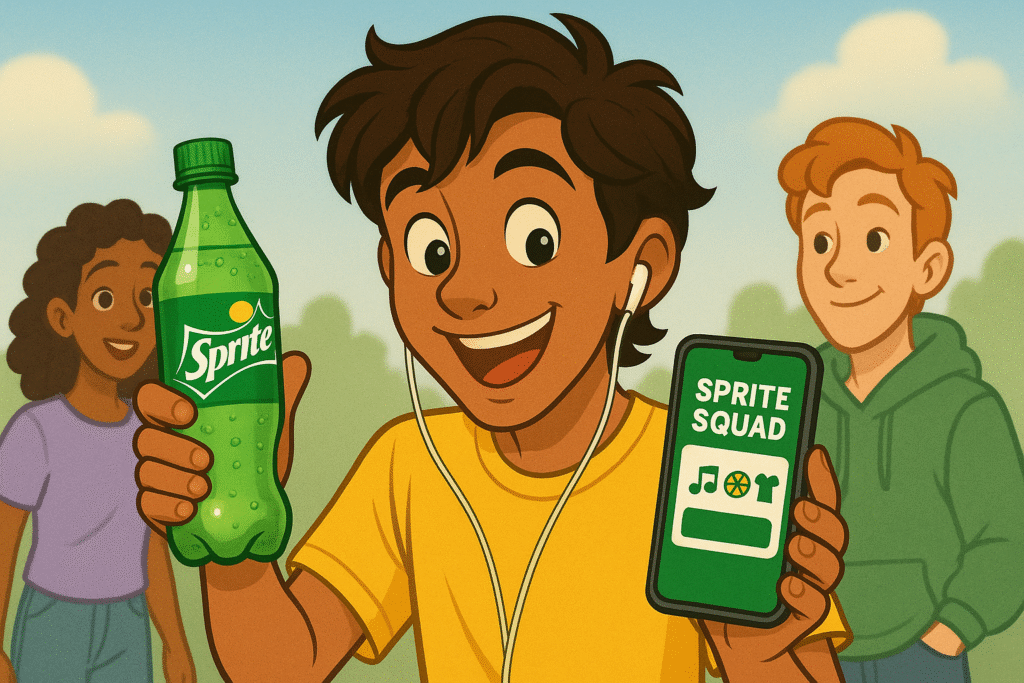
That familiar bottle of Sprite just morphed into something else.
Suddenly, it’s a ticket to exclusive music events, a key to limited fashion drops, and a membership card to a community built around shared passions.
In April, Coca-Cola quietly launched “Sprite Squad” — a digital ecosystem that transforms buying a simple beverage into an ongoing relationship with continuous rewards, exclusive content, and perks tied to music, sports, and fashion.
This isn’t your grandma’s fizzy-water promo gimmick where you look under the bottle cap hoping to win a free drink.
It’s a schoolin’ at creating an ongoing ecosystem around a product that’s always been a one-and-done purchase.
Here’s how it works:
After buying Sprite, customers text “THIRST” to a number, scan their product, and instantly join a members-only digital community with monthly content refreshes, special offers, and event access.
The first experience includes exclusive Black House Radio content and VIP performance access.
What strikes me isn’t so much the promotion itself, but the strategic shift it represents:
From selling soda pop to building an ecosystem that turns single purchases into ongoing long-term engagement.
The implications extend to what you’re working on now.
In I Need That, I discuss how products succeed when they evolve from solving a single problem to becoming part of customers’ identity and lifestyle. Sprite Squad does exactly this: transforming a momentary thirst-quencher into a community membership card that feeds customers’ bigger, deeper interests.
Every product maker should be asking: What digital ecosystem could I build around my physical product?
The beauty of this approach is its scalability across categories:
- A furniture brand could offer exclusive designer sessions
- A kitchen tool could unlock recipe collections and cooking classes
- A sports equipment maker could provide training content from pros
- A clothing brand could grant access to limited drops and style advice
What Coca-Cola Corp understands is that Gen Z doesn’t give much of a rip about products.
What they value is experiences, community, and continuous value that extends well beyond the moment of consumption.
Product Payoff: Video game veteran Nintendo mastered this approach with their Amiibo figurines, which serve as both physical collectibles and digital keys that unlock exclusive content across multiple games. This ecosystem strategy turned what would otherwise have been simple toys into must-have accessories that create ongoing value way beyond the initial purchase. Since launch, they’ve sold over 77 million Amiibo figures, creating an entirely new revenue stream while simultaneously increasing engagement with their core gaming products.
Action for today: Think what “way beyond the product” experiences YOU could create for your customers.
Start small — you definitely don’t need Coca-Cola’s wallet to implement this strategy. Even simple exclusive content, community access, or digital enhancements can transform single purchases into ongoing relationships.
Imagine how you might use QR codes, membership programs, or digital keys to unlock experiences that extend your product’s value well beyond the physical item itself.
Have you experienced any products that successfully created meaningful digital ecosystems around physical purchases? What made them attractive to you?
Tap on that reply arrow and share your experience with product ecosystems that went beyond the initial transaction.
Or reach out to my amazing team of product launch specialists at Graphos Product.
